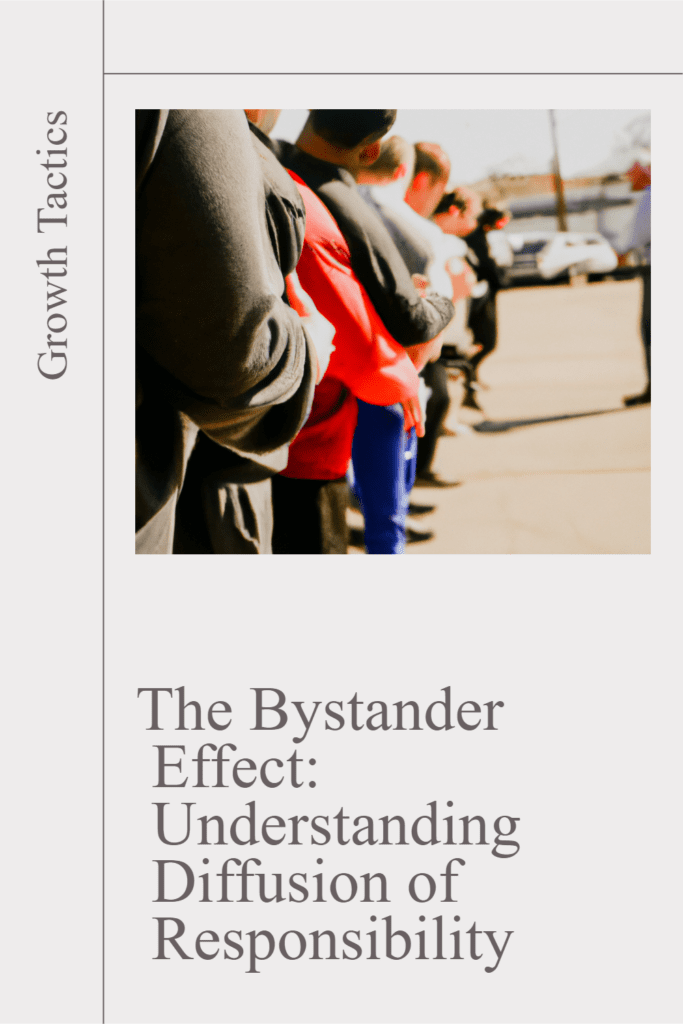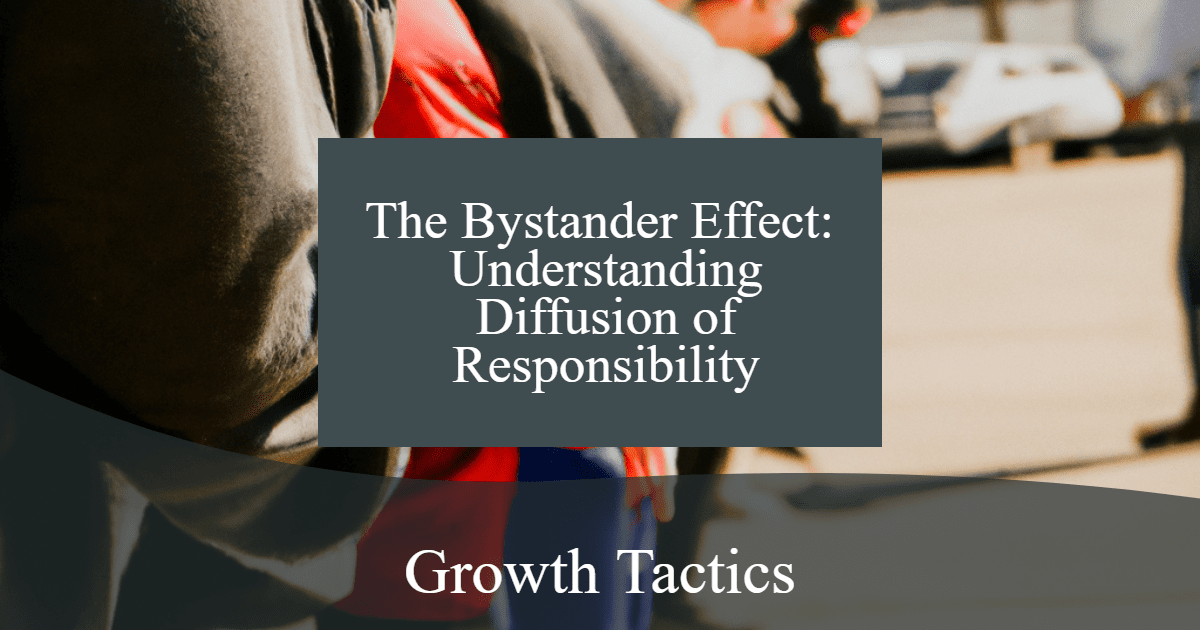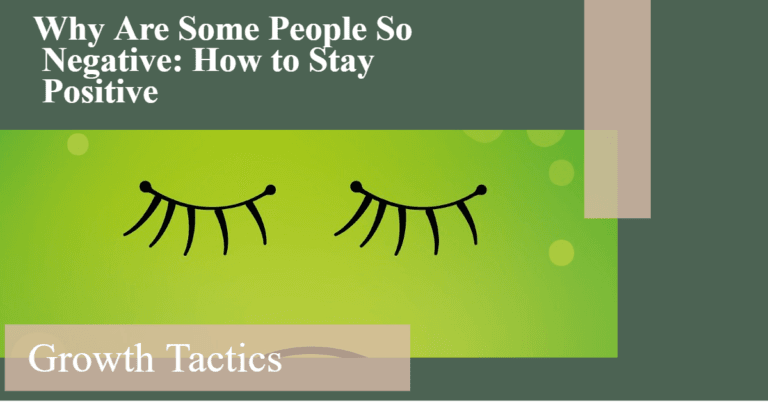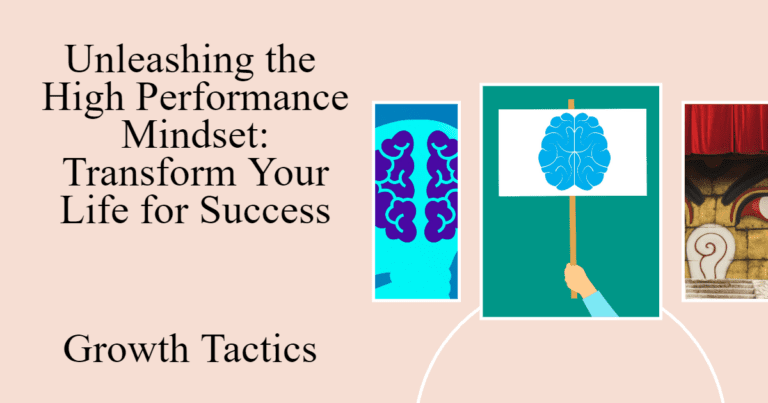In a world where we’re more connected than ever, it’s crucial to understand the social phenomena that impact our reactions during critical scenarios. One such intriguing social psychological phenomenon is the “bystander effect.”
This article will provide an in-depth exploration of the bystander effect, its origins, real-life examples, and how it can influence personal responsibility. Moreover, we will delve into strategies that can encourage bystander intervention. This is worth reading as it brings to light the subconscious mechanics at play in emergency situations which can deter us from taking action and guides us on how to overcome these barriers.
Jump To Section
The Bystander Effect: More Than Just Apathy
Remarkably, the term ‘bystander effect’ was initially conceptualized following the tragic murder of Kitty Genovese in 1964. It addresses the paradox of individuals being less likely to help a person in distress when more bystanders are present. This phenomenon is not mere apathy, but a complex interplay between social influence and diffusion of responsibility.
The Genovese Case: The Catalyst for Bystander Apathy Research
On March 13, 1964, Catherine “Kitty” Genovese was tragically murdered in front of an apartment building in New York. Despite 38 witnesses reported to be present, none intervened or called the police until it was too late. This shocking event shed light on the critical issue that would later become known as the bystander effect or bystander apathy.
Further Examples of the Bystander Effect: Real-Life Scenarios
While the concept of the bystander effect can seem abstract, it gains tangible context when we consider real-world scenarios. These examples, grounded in everyday situations or documented emergency incidents, can provide us with meaningful insights into our own potential behavior, and make the phenomenon more relatable and understandable.
Seizure Experiment of Darley and Latané
Another classic example of the bystander effect comes from the field of academic research, carried out by psychologists Bibb Latané and John Darley. In an experiment, a participant was placed in a group discussion (via intercom) with a few other individuals (who, unknown to the participant, were pre-recorded).
During the discussion, one of the other “participants” appeared to have a seizure. When the participant thought they were the only person who could hear the seizure, 85% intervened by seeking help. However, when they believed there were other individuals who could also hear it, only 31% sought to get help. This illustrates how the perceived presence of others can inhibit helping behavior.
Bystander Apathy on College Campuses
A more contemporary real-life example, one that unfortunately affects numerous victims every year, relates to sexual violence on college campuses. Several surveys have found that bystanders often witness suspicious behavior that could lead to sexual assault, but most of them don’t intervene. This is often due to factors associated with the bystander effect, such as diffusion of responsibility, fear of misjudgment or ‘misreading’ the situation (a concept known as pluralistic ignorance), or assuming that someone else will take the necessary action.
These real-life examples offer a stark illustration of bystander behavior and the potentially dire consequences of inaction. They underscore the importance of examining our own behavior, understanding the inhibiting effect of the presence of others, and embracing the responsibility to take action when we witness scenarios where help is needed. With the insights provided in these scenarios, we can equip ourselves better to potentially save a life in the future by ensuring we don’t fall into the trap of the bystander effect.
Bystander Intervention: Breaking the Cycle of Inaction
Defining Bystander Intervention
In its simplest terms, bystander intervention refers to the act of an individual voluntarily stepping up to aid another person in need, especially during emergency situations. It encompasses a spectrum of actions taken by an individual, including calling 911, offering help to a person in distress, or intervening in a precarious situation.
Bystander intervention is so critical because it’s about taking personal responsibility in group settings. This may seem counterintuitive, as group settings often lead to a diffusion of personal responsibility due to the assumption that someone else in the group will intervene. However, fostering a sense of personal responsibility can empower each individual to feel confident in taking immediate action. Without waiting for someone else to make the first move.
Importance of Bystander Intervention
Bystander intervention is not only a critical response during emergencies but is also a proactive approach to prevent dangerous situations from escalating. By intervening early, we could avert a potential crisis and ensure the safety of the individual(s) involved.
Moreover, bystander intervention is a powerful tool to counteract the inhibitory effects of the bystander effect. When more individuals feel equipped and empowered to step up and take action in critical situations, society as a whole can move past the oppressive cycle of bystander inaction.
Encouraging Bystander Intervention
Promoting bystander intervention may be challenging due to ingrained societal norms, but it’s not impossible. Campaigns and programs can be developed to help communities understand the critical role they have in creating safe environments. Educational initiatives that give clear strategies for intervening in various scenarios, along with implications of inaction, are particularly valuable.
Creating such an environment of supportive intervention not only shores up individual responsibility but also builds a collective commitment to the welfare and safety of those around us. Remember, change starts at the individual level. In making the choice to intervene rather than stand by, you are implementing an action that has the potential to shift societal norms and impact countless lives positively.
To sum it up, bystander intervention presents a holistic approach to overcoming the lingering bystander effect in society. Taking a proactive stance, recognizing emergencies for what they are, and having the courage to intervene are pivotal actions that each of us can adopt in our lives, leading to safer and more caring communities.
Actionable Steps for Bystander Intervention
1. Recognize the Situation
The first step in bystander intervention is to identify that a situation requires help. This can be anything from a medical emergency to witnessing suspicious behavior. Trust your instincts if something seems off.
2. Assess Your Safety
Before intervening, ensure your own safety. If the situation is dangerous, such as a physical altercation, it’s essential to intervene in a way that does not put yourself at risk. In such cases, calling for professional help is often the best course of action.
3. Take Responsibility
The bystander effect often occurs because individuals assume that someone else will intervene. Make a conscious decision to act, taking personal responsibility to assist the person in need.
4. Provide Direct Help
If it is safe to do so, provide direct assistance. This could involve calling emergency services, administering first aid, or offering support to the victim. Remember, any help you provide can make a significant difference.
5. Delegate Tasks
If others are present, involve them in the intervention. Assign specific tasks to individuals, such as asking someone to call 911 or helping to control the crowd. Clear delegation can help overcome the diffusion of responsibility.
6. Use Verbal Intervention
Sometimes, a situation can be de-escalated through verbal intervention. Speak up and address the behavior that’s causing concern. This can deter the offender and provide time for the victim to move to a safer location.
7. Follow Up
After the immediate crisis is handled, follow up with the victim. Offer support and ensure they receive the necessary help, whether that’s medical attention, legal aid, or emotional support.
8. Educate and Spread Awareness
Promote bystander intervention in your community by educating others about the importance of taking action. Share resources and training opportunities to help people feel more prepared to intervene in emergency situations.
By equipping yourself with these actionable steps, you can play a critical role in breaking the cycle of inaction and fostering a safer, more responsible community.
Overcoming Bystander Apathy: From Passive Onlooker to Active Bystander
While the bystander effect is a widely observed social phenomenon, it should not be considered an unchangeable aspect of human behavior. By taking a proactive approach and promoting deliberate measures, we can, in fact, overcome bystander apathy and transition from being passive onlookers to active bystanders. This section explores strategies to counteract bystander apathy and empower individuals to intervene during emergencies.
1. Raise Awareness and Educate
Education is key to tackling bystander apathy. By increasing awareness about the bystander effect and its causes, we can help individuals identify and overcome their reluctance to intervene. Educational programs and campaigns can provide guidance on how to recognize emergencies, understand one’s responsibility, and learn the appropriate steps to take when someone is in need.
2. Develop Empathy and Connection
Fostering a sense of empathy and connection with others can encourage individuals to intervene in emergencies. By actively working on building stronger social connections within communities, we can ensure that bystanders are more motivated to act in crises as they feel a deeper emotional investment in the well-being of others.
3. Cultivate Personal Responsibility
Creating a strong sense of personal responsibility can counteract the diffusion of responsibility at the root of bystander apathy. Encourage individuals to accept and embrace the idea that if they witness an emergency, they have a crucial role to play in providing help without waiting for someone else to intervene.
4. Practice Intervention Skills
One significant barrier to bystander intervention is uncertainty about the appropriate course of action. Training individuals in essential first-aid techniques, conflict resolution approaches, and safety precautions to follow during emergencies can equip them with practical skills and boost their confidence to step in and provide assistance.
5. Encourage Public Commitment
A public display of commitment to help others in emergencies can have a powerful impact on bystander behavior. Presenting role models or real-life success stories of bystander intervention can inspire others to make a conscious commitment to intervene in situations of distress.
6. Seek Peer Support
Acting as an active bystander becomes more achievable when individuals know they have a support network of peers who share the same values and objectives. Encourage communities to establish support networks where people can discuss their experiences of bystander intervention and gain practical advice or encouragement from others.
The Bystander Effect and Legal Consequences
Understanding the legal implications related to bystander behavior can add yet another layer to our understanding of the bystander effect. It raises questions not only about our moral and social obligations, but also about the legal consequences of inaction in emergencies.
Duty to Rescue Laws: The Consequence of Inaction
A ‘duty to rescue’ law makes it a legal requirement to assist someone in need if one is capable of doing so without endangering oneself. This law introduces a legal side to the moral responsibility to help individuals in distress. However, the presence and application of these laws can vary greatly from one jurisdiction to the next.
For instance, several countries in Europe—including France and Germany—impose a legal obligation on their citizens to intervene when they witness a perilous situation. Failure to adhere to this law can lead to penalties, including fines or imprisonment.
However, most states in the U.S. do not have comprehensive ‘duty to rescue’ laws. They generally promote voluntary assistance to persons in danger but do not legally enforce it, with some exceptions related to specific professions or situations.
The Legal Aspect: An Opportunity for Introspection
While some may view these laws as restrictive, they present an opportunity for introspection on our civic responsibilities and the real-life implications of the bystander effect. They provide a tangible framework for discussing our duties and understanding the mechanisms at play when we witness emergencies.
We must remember that though legal boundaries differ globally, the fundamental basis of such laws—our obligation to help one another as members of a shared community—remains a universal concept.
Legal Consequences and Bystander Intervention
Though some areas may lack binding laws, it’s important to note that legal consequences can also potentially arise when bystanders choose to intervene. Depending on local laws, bystanders who provide aid during emergencies may risk legal repercussions if their actions inadvertently cause harm. As a protective measure, many jurisdictions have ‘Good Samaritan’ laws to shield such individuals who act in good faith from legal liability.
Key Takeaways
While the bystander effect is a psychological phenomenon, understanding its legal aspects can provide a more comprehensive picture—forming an essential part of discussions surrounding civic responsibility and communal empathy.
Importantly:
- Duty-to-rescue laws, while varying globally, underline the need for bystander intervention during emergencies.
- The presence of Good Samaritan laws helps mitigate potential legal risks for well-intentioned helpers.
Remember that overcoming the bystander effect entails not only acknowledging our inherent moral obligation to assist one another but also understanding and navigating the possible legal dimensions that accompany our actions.








